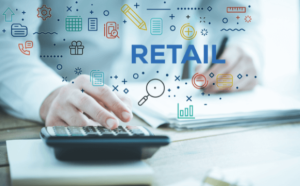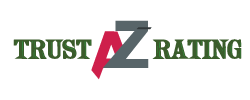Looking for information on retail loans?
What is Retail loan

What is Retail loan? Retail loans are financial products offered by retail lenders to individuals or retail customers. These lenders, such as banks, credit unions, and mortgage bankers, provide credit options like personal loans, credit cards, and mortgages to help meet the financial needs of consumers. Retail lending is distinct from traditional lending, which caters to both retail and business customers. Retail banking, on the other hand, refers to the provision of various financial services to individual consumers.
So, if you’re curious about retail loans and want to understand how they work and what types of services they offer, read on to gain valuable insights.
What is retail loan origination?
So, let’s talk about a specific type of mortgage loan called a Delegated Underwriting and Servicing (DUS) loan, which involves a partnership between the mortgage loan seller and Fannie Mae. In this arrangement, the mortgage loan seller handles the entire loan process, from taking the application to processing, underwriting, funding, and delivering the loan to Fannie Mae. The loan is closed in the name of the mortgage loan seller, who may or may not service the loan afterwards. It’s worth noting that this definition can also include joint ventures between the mortgage loan seller and another entity, as long as the mortgage loan seller retains control over the joint venture, either through majority ownership or voting rights. This type of loan offers flexibility and allows the mortgage loan seller to have a direct role in the loan process, while benefiting from the partnership with Fannie Mae.
What are the characteristics of retail loans?
A Retail loan is a type of loan that is offered to individuals by certified financial institutions like commercial banks or credit unions. It is intended to help people purchase various assets such as property, vehicles, or essential electronics. To qualify for a Retail loan, it is important to have a good credit score and a history of timely repayments. The borrower is expected to repay the loan amount along with interest, either on a monthly or annual basis, according to the predetermined terms set by the financial institution.
Retail loans are particularly useful when individuals need immediate funds to make a purchase but don’t have the necessary resources upfront. One popular type of Retail loan is a Housing Loan, which is often sought by individuals who aspire to buy their own home. Since real estate prices are generally high, it becomes challenging for the average person to afford a house outright. In such cases, banks provide the necessary financial support by lending the money, and the borrower agrees to repay it gradually over several years, along with the applicable interest.
What is an example of a retail loan?
Retail loans cover a wide variety of loans that cater to different needs. It encompasses personal loans like car loans, mortgages, signature loans, and credit cards. However, it’s important to note that business loans can also be classified as retail loans. If a business owner obtains a business line of credit, an installment loan, a mortgage for a property, an equipment loan, a small business credit card, a microloan, or virtually any other type of loan for their business, all of these loans would fall under the category of retail loans. So, whether it’s for personal or business purposes, retail loans encompass a broad spectrum of borrowing options.
What is the difference between retail and commercial lending?
Retail banking and commercial banking differ in terms of their target customers and the range of services they offer. Retail banks primarily serve individuals, small businesses, families, and communities, providing financial products and services tailored to their needs. On the other hand, commercial banks focus on larger companies, government entities, and institutions.
Commercial banks have a broader scope and often include retail banking as one division alongside investment banking and asset management services. They cater to the specific financial requirements of businesses and corporations, offering a wide range of products and services beyond what is typically provided by retail banks.
While certain careers can be found in both commercial and retail banks, such as underwriters, loan officers, tellers, and branch managers, there are also distinct roles within each sector. Retail banks employ personal bankers and personal finance advisors who work closely with individual customers to address their financial needs. In contrast, commercial banks offer careers in more complex financial services, such as portfolio management, relationship management, and investor relations, which involve working with larger organizations and their financial strategies.
It’s worth noting that technology has significantly impacted the banking industry, with the rise of online and mobile banking services. Both retail and commercial banks have adapted to these changes, providing digital channels to enhance customer convenience and accessibility.
Overall, the key distinction between retail and commercial banking lies in their target customers and the extent of services offered. Retail banks focus on individuals and small businesses, while commercial banks cater to larger corporations and institutions, providing a broader range of financial products and services.
Conclusion
Retail loans are a popular form of credit provided by lenders to individual consumers or retail customers. These loans cater to the financial needs of individuals, allowing them to make purchases, manage their money, and access credit in a secure manner. Retail lenders, such as banks, credit unions, savings and loan institutions, and mortgage bankers, offer a range of retail lending products, including personal loans, credit cards, and mortgages.
Retail lending is an established business across the financial sector, generating significant profits for lenders. Retail credit facilities are often used to provide capital for various purposes, serving as portfolios structured with different types of debt. These facilities can be utilized by companies for their own business needs or to extend credit to customers. By partnering with lenders, retail businesses can obtain a portfolio of credit, comprising term loans and revolving credit, which can be used to finance ventures, refinance debts, or make strategic investments.
Retail banking, also known as consumer banking or personal banking, is another aspect of the retail lending landscape. It encompasses financial services offered by banks to individual consumers, such as checking and savings accounts, mortgages, personal loans, credit cards, and certificates of deposit. Retail banks serve as one-stop-shop destinations, providing consumers with a wide range of basic banking services. While retail banks traditionally operate through local branch locations, the digital age has seen the rise of fintech companies offering similar services through internet platforms and smartphone apps.
In conclusion, retail loans play a crucial role in providing individuals with access to credit and financial services. Retail lenders, retail credit facilities, and retail banks collectively contribute to meeting the diverse needs of retail customers, ensuring convenient and secure avenues for managing their money, making purchases, and fulfilling their financial goals.
